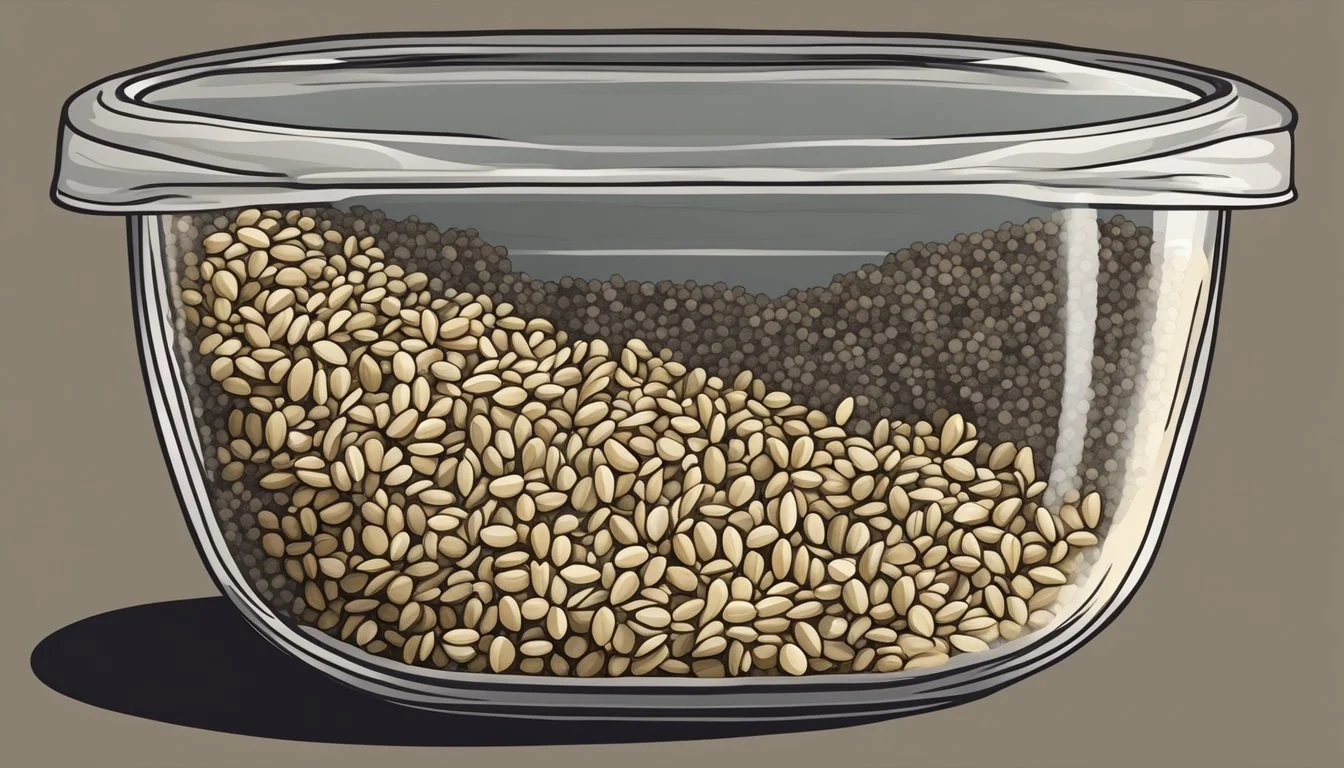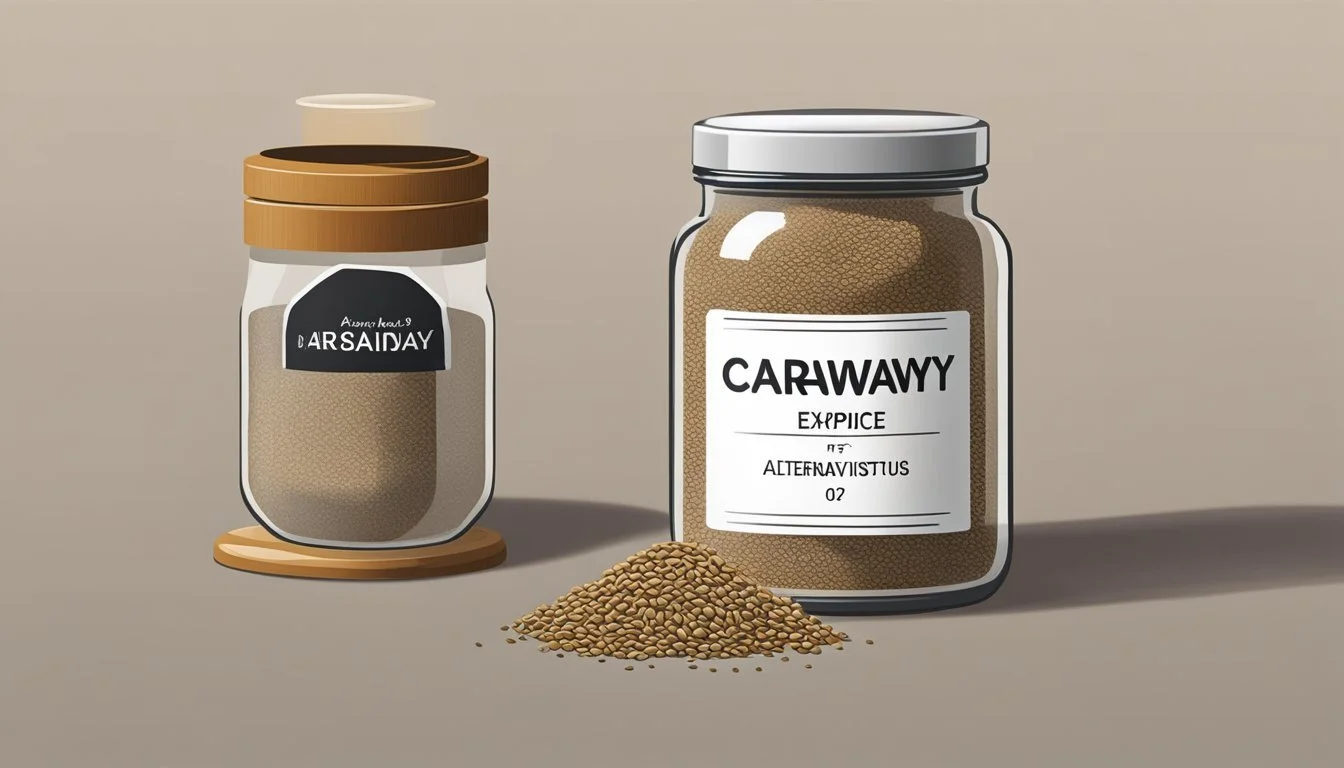Do Caraway Seeds Go Bad? Understanding Their Shelf Life and Storage
Curious about whether caraway seeds go bad? The answer is yes, caraway seeds can lose their quality over time. When stored in a cool, dark place in an airtight container, they maintain their best quality for about 3 to 4 years. This popular spice, known for its distinctive flavor and aroma, is often used in various European cuisines, from bread to sausages.
Proper storage is crucial for extending the shelf life of caraway seeds. Light, moisture, and heat can significantly shorten their longevity. To ensure your caraway seeds stay fresh, keep them away from these elements, ensuring they add a delightful note to your dishes as intended.
Using high-quality caraway seeds enriches the culinary experience, making dishes more flavorful. Discard any seeds that smell rancid or show signs of mold, as they can compromise both the taste and safety of your food. Enjoy the rich, earthy tones of fresh caraway seeds in your favorite recipes.
Caraway Seed Basics
Caraway seeds, known for their distinct flavor and aroma, have a rich history and are a staple in various cuisines. These seeds are not only valued for their culinary uses but also for their versatility in enhancing dishes like rye bread, sauerkraut, soups, and stews.
Origins and Characteristics
Caraway seeds come from the plant Carum carvi, native to Europe, Asia, and North Africa. They are crescent-shaped with five pale ridges.
The flavor profile of caraway seeds combines hints of liquorice, similar to anise and fennel seeds, with earthy undertones. The aroma of caraway is sharp and slightly sweet, making it a unique addition to many recipes. These characteristics are why they're so popular in culinary traditions around the world.
Culinary Uses
Caraway seeds are used extensively in European dishes, particularly in German, Austrian, and Hungarian cuisines. They are a key ingredient in rye bread, providing the bread's signature taste.
In addition to baking, these seeds are often added to sauerkraut, enhancing its flavor with their distinct taste. They are also used in soups and stews where their robust flavor complements the other ingredients. Many recipes benefit from the addition of caraway seeds, either whole or ground, making them a versatile spice in the kitchen.
Proper Storage Methods
Proper storage is essential for maintaining the quality and extending the shelf life of caraway seeds. Key factors include controlling environmental conditions and using appropriate storage containers.
Environmental Factors
Caraway seeds are sensitive to light, temperature, and moisture. Exposure to light can degrade their flavor and potency. Therefore, it's advisable to store them in a dark place, such as a cupboard.
Temperature control is equally important. High temperatures can lead to a loss of essential oils, reducing the seeds' flavor. A cool, dry environment is ideal. Storing them away from heat sources like stoves or ovens will help.
Moisture is another critical factor. Excess moisture can lead to mold and spoilage. Using airtight containers prevents exposure to humidity. This ensures the seeds remain dry and fresh for longer periods.
Optimal Containers
Choosing the right containers is crucial for extending the shelf life of caraway seeds. Airtight containers are the best option. These containers prevent air and moisture from getting in, preserving the seeds' quality.
Glass jars with tight-fitting lids are highly recommended. They are non-reactive and don’t impart any unwanted flavors. Plastic containers can also be used, but it’s essential to ensure they are food-grade and have tight seals.
Some people prefer using vacuum-sealed bags, which can also be effective. Regardless of the type, keeping the container in a cool, dark place will further protect the seeds from environmental factors.
Shelf Life and Freshness
Caraway seeds have varying shelf lives depending on their form and storage conditions. Whole seeds generally last longer than ground seeds due to their lower exposure to air and moisture. Freshness can be gauged by examining several factors, including appearance, odor, and texture.
Determining Freshness
Appearance: Fresh caraway seeds should have a consistent color and be free from any visible mold or discoloration. Any changes in color can indicate spoilage or a decrease in quality.
Odor: Good quality caraway seeds emit a strong, characteristic aroma. If the seeds lack a distinct smell or have an off-putting odor, it suggests they may have gone bad or lost potency.
Texture: Fresh whole caraway seeds are firm and dry to the touch. Ground caraway seeds should be free from clumps or moisture. Changes in texture, such as becoming soft or sticky, can signal spoilage.
Expiration Guidelines
Whole Seeds: When stored in a cool, dark place, whole caraway seeds maintain their best quality for 3 to 4 years. Ground Seeds: These have a shorter shelf life, typically around 1 to 2 years. The increased surface area leads to quicker degradation.
Storage Conditions: Airtight containers are crucial to protect seeds from moisture, light, and air. Improper storage can hasten the loss of flavor and potency. Best Quality: It's important to use the seeds within their optimal timeframe to ensure the best culinary experience.
Expiration Date vs. Best Quality: While caraway seeds past their expiration date may not necessarily be harmful, their quality, including flavor and aroma, will diminish, making them less desirable for cooking.
Recognizing Spoilage
Caraway seeds, like many other spices, exhibit certain signs when they start to spoil. Key indicators of spoilage include noticeable changes in appearance and smell.
Visual and Olfactory Signs
Visual Signs: Check for any discoloration or changes in color. Fresh caraway seeds have a consistent brown hue, so any darkening or unusual patches can be signs of spoilage. Additionally, mold growth is an obvious indicator that the seeds have gone bad. Mold appears as fuzzy or powdery spots in various colors, such as white, green, or black.
Olfactory Signs: Fresh caraway seeds have a distinct, slightly sweet aroma. If the seeds emit an off-putting or rancid odor, they are likely spoiled. The presence of a musty or sour smell can also signify that the caraway seeds are no longer usable.
Usage Tips
Caraway seeds can significantly enhance the flavor and aroma of various dishes when prepared and stored correctly. Following these usage tips can help you get the most out of your caraway seeds in both potency and cooking applications.
Enhancing Seed Potency
Proper Storage: To maintain the potency of caraway seeds, store them in a cool, dark place away from direct sunlight or heat. Airtight containers can prevent moisture and light from degrading the seeds' quality.
Toasting: Toasting caraway seeds releases their essential oils, enhancing both flavor and aroma. Heat a dry skillet over medium heat and add the seeds, stirring constantly until they become fragrant. Be cautious not to burn them.
Grinding and Crushing: For a more intense flavor, grind or crush the seeds just before use. This method is especially helpful when incorporating caraway seeds into sauces or marinades. Use a mortar and pestle or spice grinder for the best results.
Cooking Applications
Soups and Stews: Caraway seeds add a warm, slightly sweet flavor to soups and stews. Sprinkle a teaspoon of toasted, ground seeds into the pot during the cooking process.
Meat Dishes: Integrate caraway seeds into meat dishes like sausages, beef roasts, or lamb for an earthy, aromatic influence. Marinate the meat with spices including caraway to infuse it deeply.
Vegetables and Sauerkraut: These seeds are a classic ingredient in sauerkraut. Add them while fermenting cabbage to enhance tanginess. Caraway seeds also pair well with root vegetables like carrots and potatoes; sprinkle over roasted veggies for an added zest.
Breads and Pastries: Caraway seeds lend a unique flavor to bread and pastry recipes. Commonly used in rye bread, the seeds add both texture and aroma. Simply mix them into the dough before baking.
By focusing on these usage tips, you can maximize both the flavor and shelf life of your caraway seeds, making them a valuable addition to your kitchen repertoire.
Substitutes for Caraway Seeds
There are several alternatives to caraway seeds that can be used to achieve a similar flavor profile in various dishes. Each substitute has unique characteristics making them suitable for different culinary applications.
Common Replacements
Anise Seeds
Anise seeds are a popular replacement due to their similar licorice-like flavor. Use anise seeds in a 1:2 ratio to caraway seeds; for example, if the recipe calls for 1 teaspoon of caraway seeds, use 1/2 teaspoon of anise seeds. Anise seeds work well in bread, salads, and dressings.
Fennel Seeds
Fennel seeds closely mirror the licorice essence of caraway seeds and can be used interchangeably in a one-to-one ratio. They are suitable for both savory and sweet dishes and are often found in Mediterranean and Italian recipes.
Cumin
Cumin serves as another substitute, especially in stews, curries, and sauces. It offers a warm, earthy flavor with a nutty and slightly citrusy undertone. Though its flavor is more intense, it can replace caraway in recipes where a bold taste is desired.
These alternatives can be used effectively based on the dish's needs, ensuring the desired flavor is maintained.





